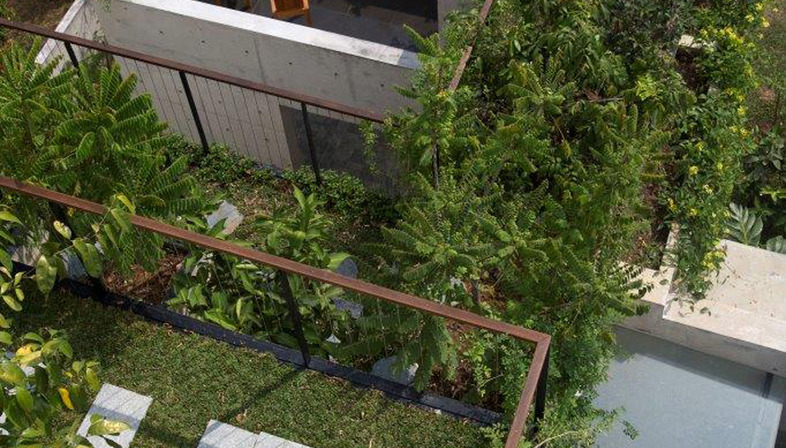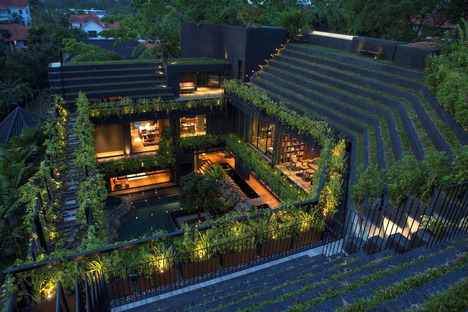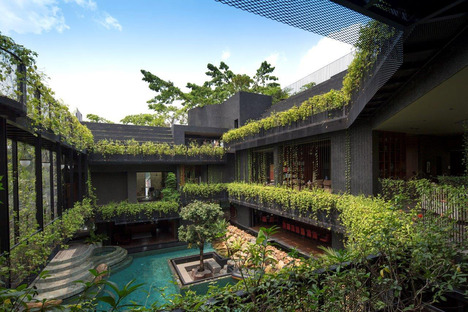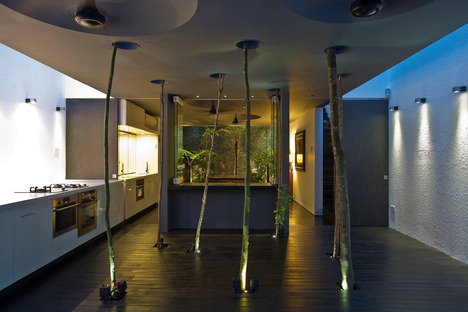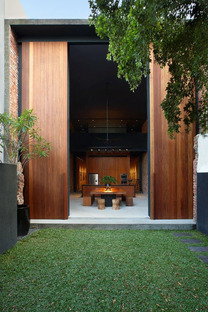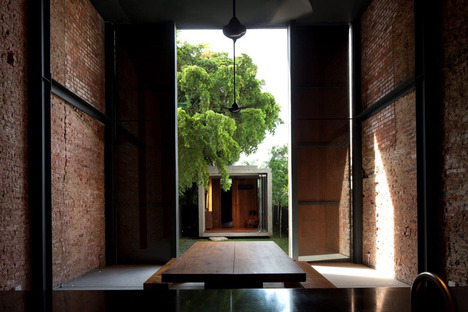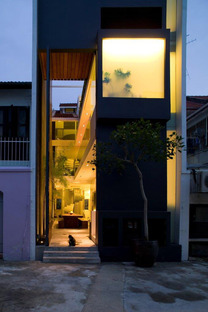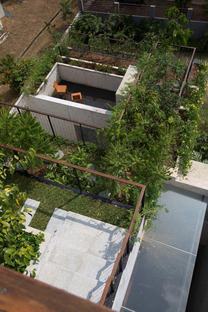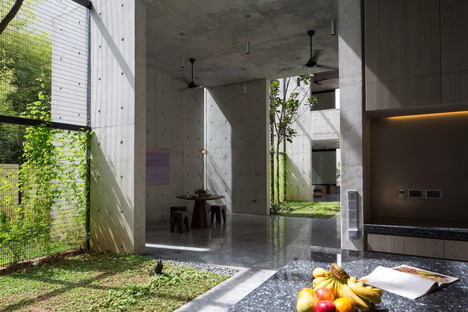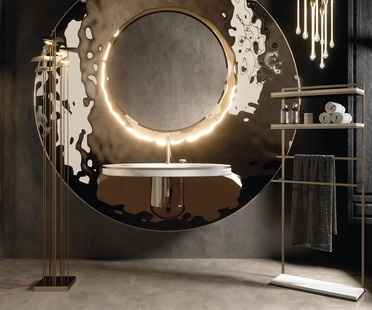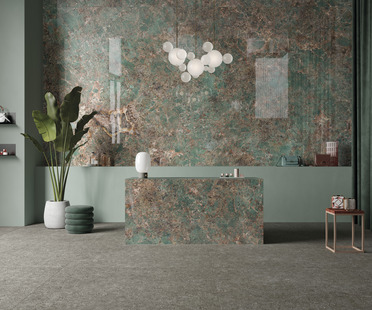11-02-2019
ONSTAGE: INTERVIEW WITH CHANG YONG TER
©Chang Architects, Mr. Albert Lim K.S.,
Interviste, Chang Yong Ter, Interview,
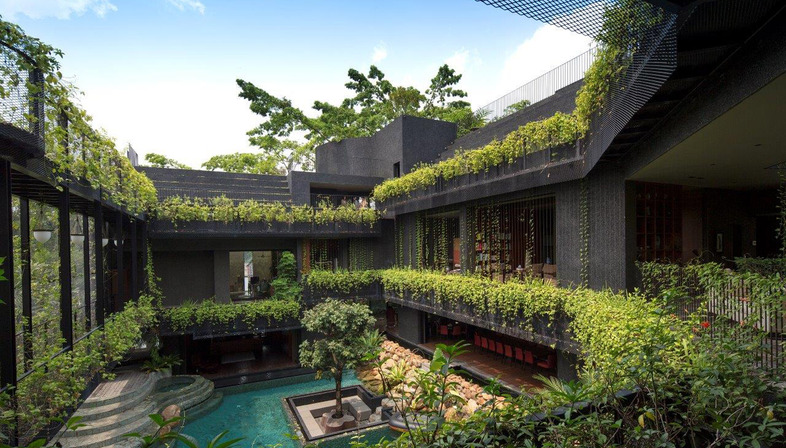
Referring to the last appointment dedicated to Singapore, I would like to give a voice to a young architect who has realized projects not impressive for size but has always struck me for the great sensitivity and competent, passionate dedication he spends in accomplishing perfectly harmonized natural living environments. His works, mainly private houses, unfold a common narrative: will to satisfy needs and aspirations of the client and sincere passion for a biophilic design. Even if extremely pragmatic and rational in their approaches, the proposals, in the research of establishing a tuneful co-existence between human beings and nature, tend to lose material definition, fading into the abstraction of idyllic situations that resonate in our hearts with the power of utopian visions. Deeply involved in an encompassing experience, we feel touched in all our senses.
Cornwall Gardens, the great residence of a large multi-generational family, open, with a rare tendency in the present days but attuned with the designer’s character, to accommodate future new arrivals, represents the compendium of Chang’s design aspirations. Beautiful and captivating, the house develops in absolute respect of the contextual situation, a plot of land that slops steeply from the road, daring to challenge certain rules of fengshui, which would read negative, unfortunate connotations in a site like this.
The heart of the house is a lush open-air court, around which, on three sides, cluster living and sleeping area that overlook the pool and a romantic koi fish pond. A careful, extremely varied selection of aromatic, ornamental, fruit plants saturate every corner and daily moment with fragrances and colors. Passion fruits and climbing vines grow twisting along vertical steel cables creating pleasant green screens in front of the bedroom windows. Challenging fengshui‘s inauspicious previsions made it possible to exploit the position by providing excellent natural ventilation. Waterfalls, abundant water and plants, scattered all over the place, help passive cooling, as well as offer special corners for privacy or pleasant conviviality’s pauses to all members of the family. The comfort, the energetic and healthy contribution of the proposal correspond to the ideals of an architect who aspires to reach in everyday life calm and harmony that the rushed times we experience seem to deny us. And for us, who observe shots of this charming setting, the sensations, the emotions speak louder than the force of its aesthetics.
Chang Yong Ter has received prestigious recognitions that testify high appreciation for his brilliant gestures playing on the dichotomy audacity-poetry and where nature is the prominent scale.
1. Your architecture, as you said, aims to enrich rituals of everyday life. Can you explain what you mean and how this happens?
It is about how architecture could help bring about one’s sense of being and consciousness – in that space in that particular moment in that particular setting. These are blissful moments that one may recall from time to time, the good feelings of such moments, perhaps even after many years later in life.
2. Your environment is a tropical context that allows you a great synergy with nature. Do you consider yourself a privileged? How would you keep your philosophy of life, in close consonance with green, working in different contexts?
Yes, very privileged indeed. Especially when I got to know how much longer it would take for trees to grow in temperate countries. Notwithstanding, I believe that nature has its place in every corner on this planet and in a form that is unique and relevant to each place.
3. You have until now worked mainly on low rising projects with respect of local context and culture and attentive response to climatic conditions, harmonizing natural and built environment, what if you should face the design of a skyscraper? Which lexicon do you consider more appropriate to blend a high-rise, not part of vernacular tradition, with the environment?
Would reckon how this skyscraper should respond to its surrounding context, in proximity as well as in areas that this is visible from.
4. With which kind of public project would you like to add your sign in Singapore?
Any project would do as long as I’m able to add to the spirit of that place.
5. Singapore in less than fifty years has transformed drastically from a small city-state into a prosperous international green capital. As a firm established primarily on this territory, what could be a lesson Singapore sets for the future generations and the world?
What is evident in terms of physical progress are the infrastructures and the efficient systems that keep the city thriving and staying relevant. In the process we have well-developed hardware. It is my hope that we could be more conscientious of our ‘software’ – with greater capacities for (human) feeling, particularly as we gear towards being a ‘smart nation’, the robotic age, etc.
6. Being awarded a prestigious recognition as the UNESCO Asia-Pacific New Design in Heritage Context, could you tell me a bit about the challenges you have come across in this period of fast pace constructions and drastic transformations occurring especially in the Asian context?
Yes, instead of the fast pace it is essential to slow down, or even pause, before embarking on any building project, before the ground is disturbed, before replacing any old structure. Too often buildings are designed with little time (hence with little thoughts) and built within short time-frame – as in a haste. The priorities are often time (speed) and cost (economy) more than how the new building would add to the quality of the place and the users of it.
7. Do you find easy to feel attuned with clients about importance of historical past and imprint of green features in your fulfillments?
The experiences vary as different clients would have different inclinations to their interests in life. The portfolio would often attract clients with similar interests.
8. I read that you said once, at the beginning of your practice, as synthesis of your ethical approach to the profession: “Always be hungry for the next best work – belief that the best is yet to be. Be bold and daring – design not just from the mind, but the heart as well. Compete with no one, in order to be someone.” Is this a very enthusiastic, ‘young’ statement, free from any sort of compromise: do you feel today, after years of activity, to give the same advice to young people?
These still hold true for me. I believe such attitudes/beliefs serve well regardless of age group.
9. Do you believe we, as designers, are doing enough today to bring architecture and nature in coexistence?
I would certainly say yes in the Singapore’s context. The planning and building authorities have been very proactive and encouraging. Certain practices have even become mandatory before trends set in.
Credits:
Chang Architect : www.changarch.com










